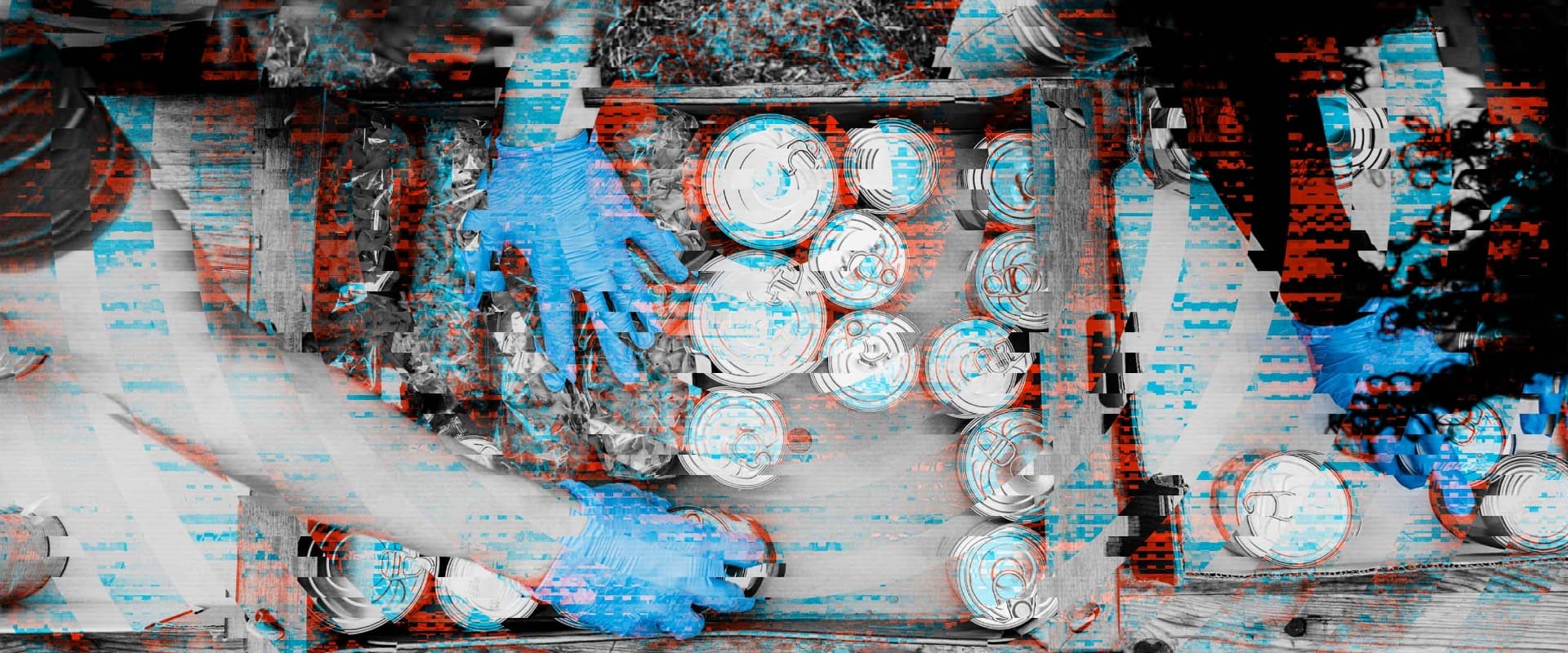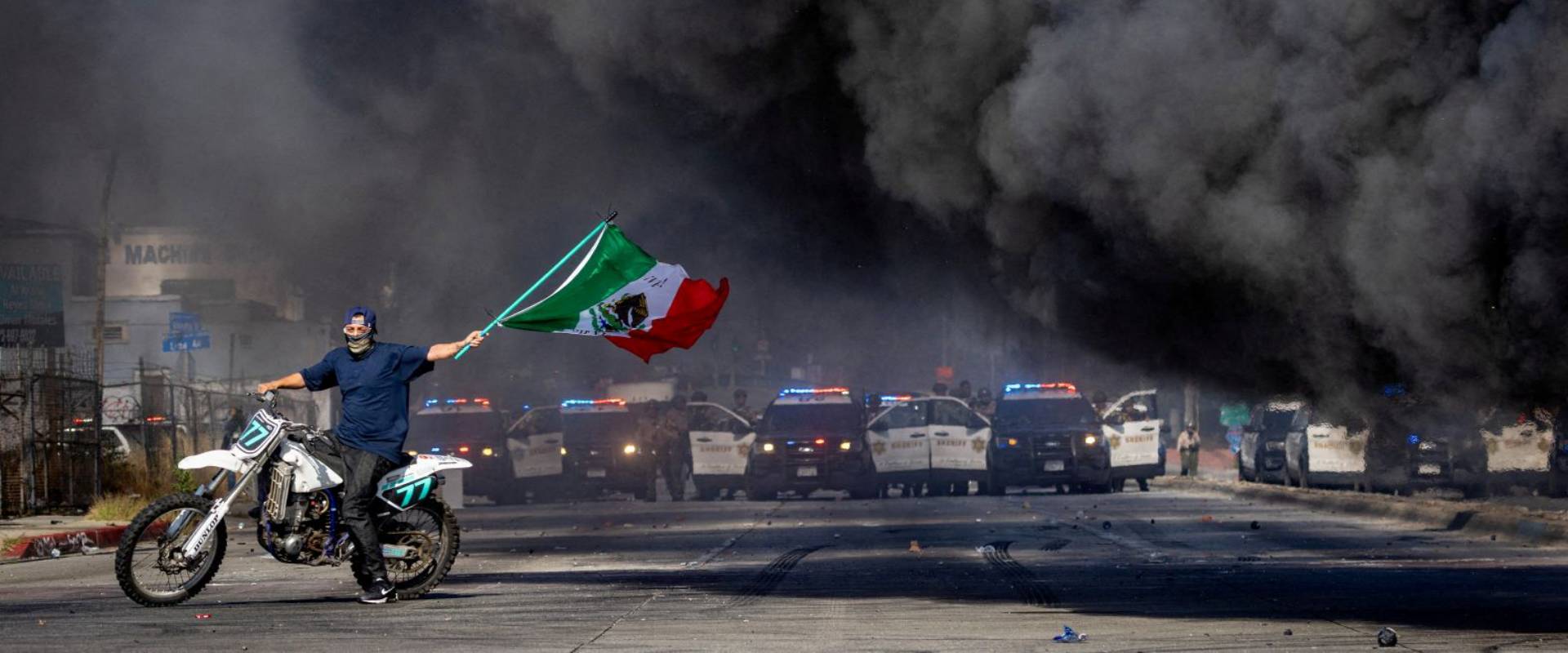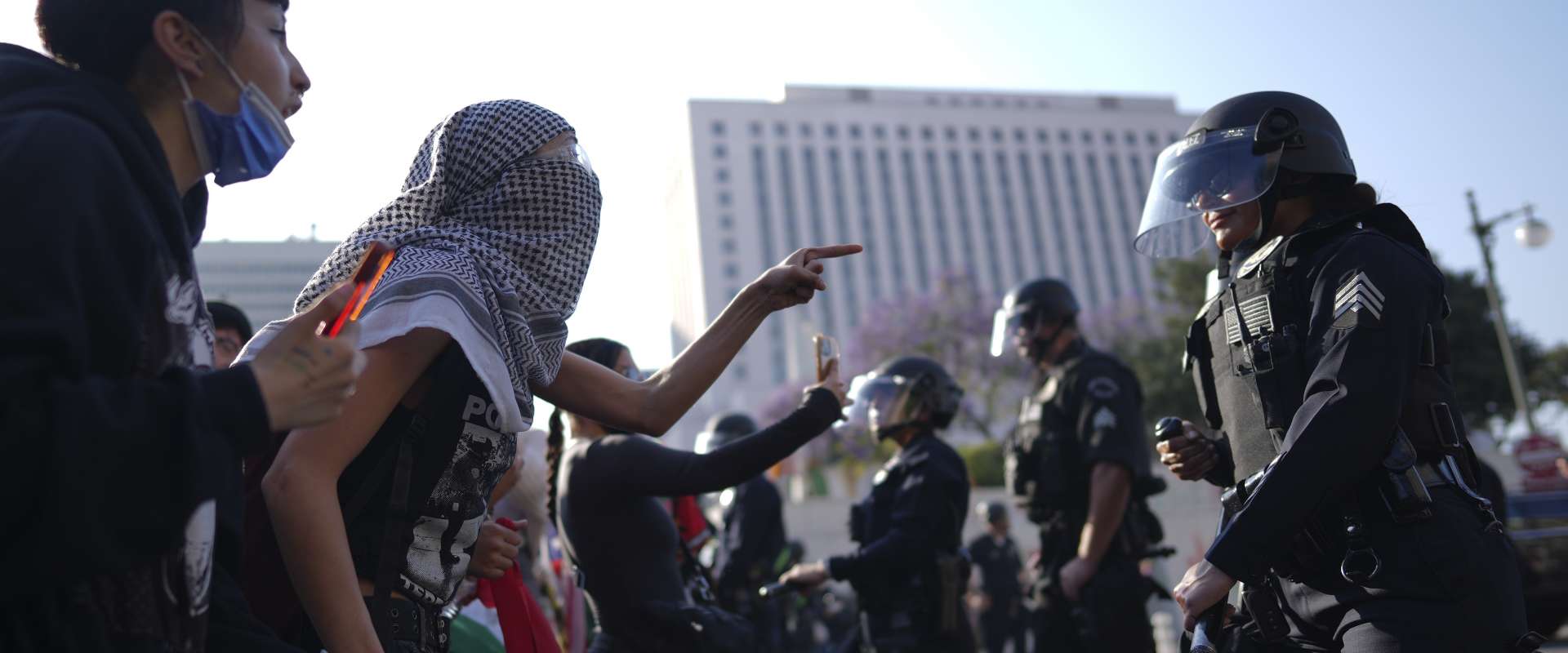In recent years, mutual aid has overtaken protest as a dominant form of Left political action. When the US government failed to address anything more than the barest of needs during the pandemic, communities organized themselves. After this same government repressed and co-opted the 2020 rebellion, even more individuals and activist groups turned to the strategy. All of this was helped along by direct interventions from figures like Alexandria Ocasio-Cortez.
But what attitude should communists and revolutionary socialists have to mutual aid? Should we support these efforts, and if so, how?
Our Purpose
What is our purpose as a revolutionary organization? It’s not to “support” the poor and working class. It’s liberation. We don’t want to just survive and get by, or help others survive and get by. Otherwise, we would go volunteer for the Salvation Army or any secular or Christian charity. Of course, we’re not indifferent to people’s immediate needs. We want higher wages. We want people to stay in their homes. But these are pieces of a bigger program.
We want to overthrow the entire system of exploitation and oppression. We must get rid of capitalism and build a socialist society.
As the global history of class struggle teaches us, it’s been precisely the failure to develop parties and politics of sufficient size and depth that have doomed explosions, rebellions, and revolutions in the past. So any work — in movements, in mutual aid projects — has to be approached in a way that supports that central goal.
We do that by forging revolutionary organization, raising the political consciousness of the working class, and otherwise preparing politically — both in the realms of ideas and institutions. As the global history of class struggle teaches us, it’s been precisely the failure to develop parties and politics of sufficient size and depth that have doomed explosions, rebellions, and revolutions in the past.
So any work — in movements, in mutual aid projects — has to be approached in a way that supports that central goal. This work must be subordinated to that goal.
Mutual aid deserves particular considerations that I’ll get to in a moment, but I want to emphasize that it’s not just a problem of mutual aid. We must approach direct action and mass movement work with a similar subordination. Why? Because not injecting socialist consciousness and organization into this work, not subordinating it to socialist ideology, means subordinating it in actuality to bourgeois ideology instead.
In 1971, Duncan Hallas wrote in “Towards a Revolutionary Socialist Party”:
“That hoary red herring, the question of whether socialist consciousness arises “spontaneously” amongst workers or is imposed by intellectuals from the “outside” has absolutely no relevance to modern conditions… It is rather ridiculous to argue about whether one should bring ideas from “outside” to workers who own television sets. Certainly most workers and especially the activists see things rather differently than the denizens of the stockbroker belt. Their whole life experience ensures this. But workers are not automata responding passively to the environment. Everyone has to have some picture of the world, some frame of reference into which data [is] fitted, some assumptions about society.
The whole vast apparatus of mass communications, educational institutions and the rest have, as one of their principal functions, what sociologists call “socialization” and what the old Wobblies called head-fixing. The assumptions convenient to the ruling class are the daily diet of all of us. Individuals, whether bus drivers or lecturers in aesthetics, can resist the conditioning process to a point. Only a collective can develop a systematic alternative worldview, can overcome to some degree the alienation of manual and mental work that imposes on everyone… a partial and fragmented view of reality. What Rosa Luxemburg called “the fusion of science and the workers” is unthinkable outside a revolutionary party.”
Or, as Marx and Engels wrote, the ruling ideas of every age are the ideas of the ruling class. The capitalists have control of not just the means of material production, but also the means of mental production. Their ideas are imposed as the “common sense” of our epoch. And so, we must deliberately and actively fight for socialist consciousness.
As Lenin wrote in What Is to Be Done?:
“Since there can be no talk of an independent ideology formulated by the working masses themselves in the process of their movement, the only choice is either bourgeois or socialist ideology… The spontaneous development of the working-class movement leads to its subordination to bourgeois ideology… Hence our task is to divert the working-class movement from this spontaneous trade unionist striving.”
In this classic pamphlet, Lenin is fighting with other socialists from a trend known as Economism who saw the movement’s main task as supporting the immediate economic struggles of workers without raising the question of socialism. They would go to the factories, listen to workers, and write “exposure” leaflets to agitate for higher wages, better working conditions, etc. They were trying to do the “good work” of supporting workers directly without talking about socialism or fighting the czar. This is what Lenin had to say:
“The overwhelming majority of Russian Social-Democrats have of late been almost entirely absorbed by this work of organizing the exposure of factory conditions… so much so, indeed, that they have lost sight of the fact that this, taken by itself, is in essence still not Social-Democratic work, but merely trade union work… These exposures could have served (if properly utilized by an organization of revolutionaries) as a beginning and a component part of Social-Democratic activity; but they could also have led (and, given a worshipful attitude, were bound to lead) to a ‘purely trade union’ struggle and to a non-Social-Democratic working-class movement…
Social Democracy leads the struggle of the working class, not only for better terms for the sale of labor-power, but for the abolition of the social system that compels the propertyless to sell themselves to the rich… Hence it follows that not only must Social-Democrats not confine themselves exclusively to the economic struggles, but that they must not allow the organization of economic exposures to become the predominant part of their activities. We must take up actively the political education of the working class and the development of its political consciousness.”
Today, we can see mutual aid, along with movement work, as replacing the factory exposures and economism of What Is to Be Done’s time.
Limitations
Now, there are some limitations inherent to mutual aid specifically:
- Mutual aid accepts the neoliberal hellscape we live in as a given. Rather than organizing to demand the bosses or the state provide their vast material means towards our survival, mutual aid re-organizes our limited individual resources. This fits unintentionally, but still very neatly, with capitalism’s five-decade-long project to destroy social programs and remove any sense of state or capitalist responsibility for people’s poverty. Rather than challenge this reality, mutual aid reinforces it — “we don’t need to demand things from the state. We can do it ourselves.”
- Mutual aid organizers often stand above or outside the community they’re serving. Often, the targets of mutual aid work are the most downtrodden — the lumpen jobless, rather than workers who have a strategic power to shut the system down. The only exception to this division between “provider” and “receiver” is when mutual aid emerges organically, in the heat of a struggle.
For example, during the 1934 Minneapolis Teamster strike the union organizing committee set up their own field hospital and kitchen at their strike headquarters. The kitchen served meals to 10,000 strikers and their families every single day of the strike. All this was organized by the workers themselves. We could argue that this was a form of mutual aid.
In 2011, during the occupation of Madison, Wisconsin’s capitol building, union workers set up charging stations and take-what-you-need diaper and sleeping-bag stations. These were run by the people themselves, those directly involved in the struggle against Governor Scott Walker’s union-busting bill. The same dynamics played out in Tahrir Square during the Egyptian revolution.
None of these examples, however, are the same as going into a community and providing food or goods to the needy.
- Mutual aid projects do not inherently serve the process of workers becoming “fit to rule,” unlike confronting power by organizing your community or workplace and making demands on your boss or landlord.
A strike or social protest teaches workers through experience, whether in organizing or participating. Seeing the cops protect scabs or kettle and beat protesters reveals what side the cops are on (not ours). The experience of having all your co-workers on a picket line and shutting down your place of work, or that of seeing thousands on the streets with you reveals the collective power – real or potential – we have in our numbers. All of these lived experiences in struggle create the concrete potential for people to break with bourgeois ideology and — with the existence of a socialist project providing an alternative explanation — replace it with socialist consciousness.
As John Berger wrote in “The Nature of Mass Demonstrations”:
“Mass demonstrations are rehearsals for revolution: not strategic or even tactical ones, but rehearsals in revolutionary awareness… Those who take part become more positively aware of how they belong to a class. Belonging to that class ceases to imply a common fate, and implies a common opportunity.”
Or as Marx and Engels wrote: a revolution is necessary in part because only in a practical movement can workers rid themselves of the “muck of the ages” and be ready to found society anew.
Mutual aid doesn’t share this feature with mass demonstrations. In fact, it keeps people’s experience on a much more individual scale: I need this, so I reach out to the mutual aid project to get it. This is even more clear and obvious from the most atomized version of “mutual aid”: the countless “mutual aid” requests one sees posted and shared every week on social media.
Only when organizers deliberately cultivate political education does a mutual aid project even begin to scratch at the revolutionary awareness that’s baked into strikes, mass demonstrations, etc. Only when a collective experience is deliberately fostered does mutual aid truly approach the “solidarity, not charity” slogan it popularizes.
As we have seen since 2020, an inherent danger in this is turning to mutual aid in retreat from confronting power and building mass movements.
That doesn’t mean mutual aid can’t serve a purpose. It just means we have to recognize the limitations and shape our tactics and approach with that in mind.
Only when organizers deliberately cultivate political education does a mutual aid project even begin to scratch at the revolutionary awareness that’s baked into strikes, mass demonstrations, etc. Only when a collective experience is deliberately fostered does mutual aid truly approach the “solidarity, not charity” slogan it popularizes.
Before I flesh some proposed tactics out, I want to return to what I said earlier. While mutual aid has its particular limitations, direct action and mass demonstrations are not automatically more socialist, either. Here, the Gus Breslauer piece from Regeneration also operates on fundamentally a wrong foundation. Its approach is still the same economism that Lenin fought against — only direct action and “marching on the boss” is set above mutual aid.
So again, marching on the boss, direct action, organizing workers, and mutual aid… all of these must be subordinated to the task of building a revolutionary socialist organization and consciousness inside the working class. To do so otherwise would keep us doing purely trade union work, purely charity work, purely bourgeois liberalism.
Strategies
How, then, might we approach mutual aid as revolutionaries? I think we could use mutual aid to:
- Make organic contacts with people in the community. Not only can we as a group become more visible, but we can learn a great deal. What are the problems people are facing? What could we organize a protest around? What demands could we make on politicians or bosses? How can we develop a program and win others to that program?
- Establish networks of people and turn them from recipients into political subjects (as the immigrant justice group Movimiento Cosecha tried to do during the pandemic). Have them participate in organizing the mutual aid work, and channel them into other political activity (protests, political education, etc.).
- Create space for political education as part of mutual aid work. Always have our books and leaflets there. Give speeches about issues during a Free Store. Play political music.
- Build revolutionary organization. Most of all, any and every participant should be invited into the revolutionary organization, trained as a revolutionary activist, and developed as leaders.
All of this has a precedent. The initial working-class circles and leaders that built the Polish radical union Solidarnosc came together through the Committee for the Defense of Workers, a mutual aid group from 1976 that moved beyond “fund-raising towards working-class organization.” The working-class organizations and newspapers that formed out of this work developed cadres of rank-and-file working-class activists. These cadres in Gdansk, grouped around the paper Coastal Worker, organized the strike in the shipyards that launched the Polish revolutionary wave of 1980-81.
Likewise, the work of the Black Panther Party’s Breakfast for Children program is another example. Not only did the Panthers provide a service to working people and their children, they taught children basic Panther politics. Every breakfast contained a political education element, from teaching children their history to teaching them anti-police and pro-Panther songs. The Panthers involved other adults in organizing the breakfasts; these volunteers for the program often later became full-fledged party members. In the words of party leader Erica Huggins, with a community school the Panthers set up they “gave people a sense of themselves and their place in history, and their indispensable purpose on this Earth.”
Mutual aid has its inherent limitations, but it can have a purpose. Against liberal individualism and anarchist spontaneism, it’s time for revolutionary socialists to have a clear strategy for mutual aid moving forward.



